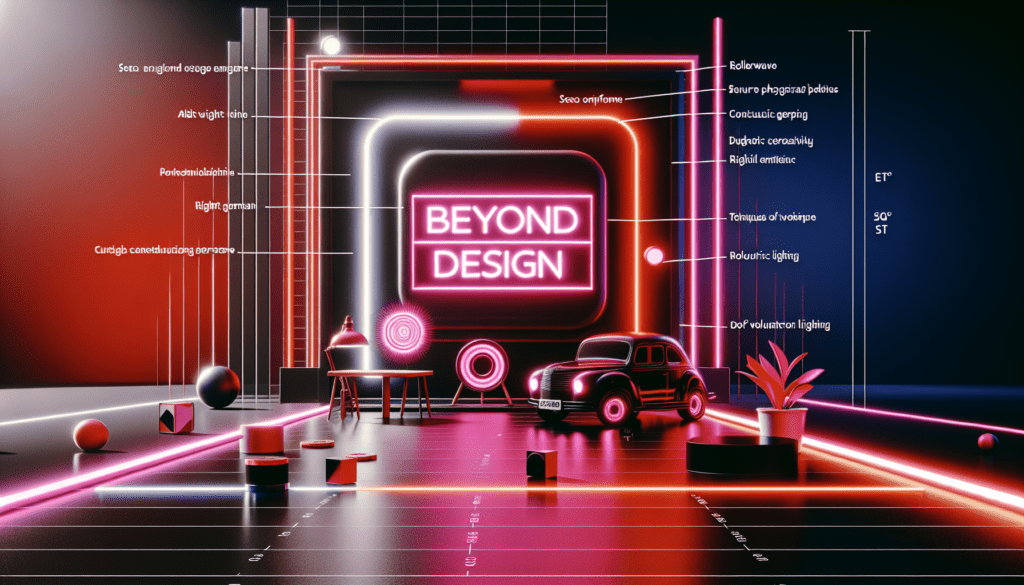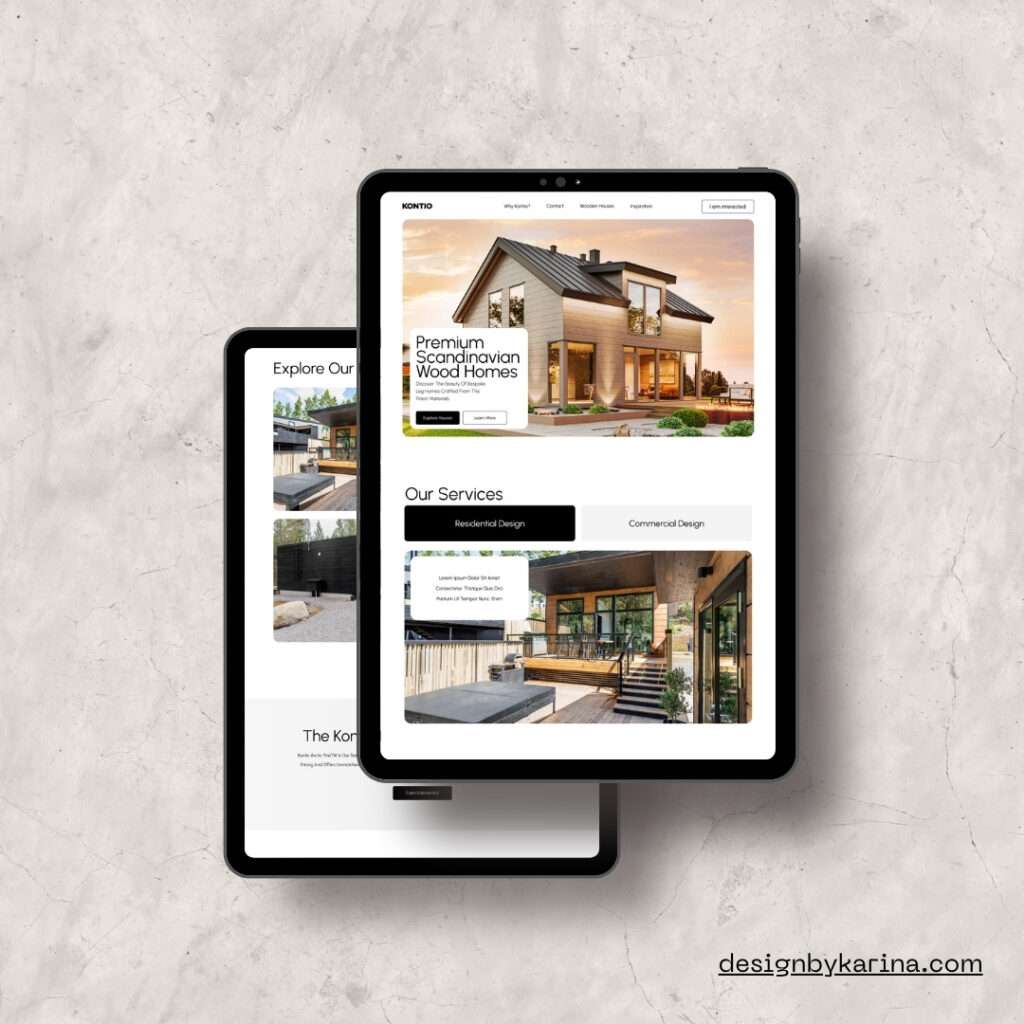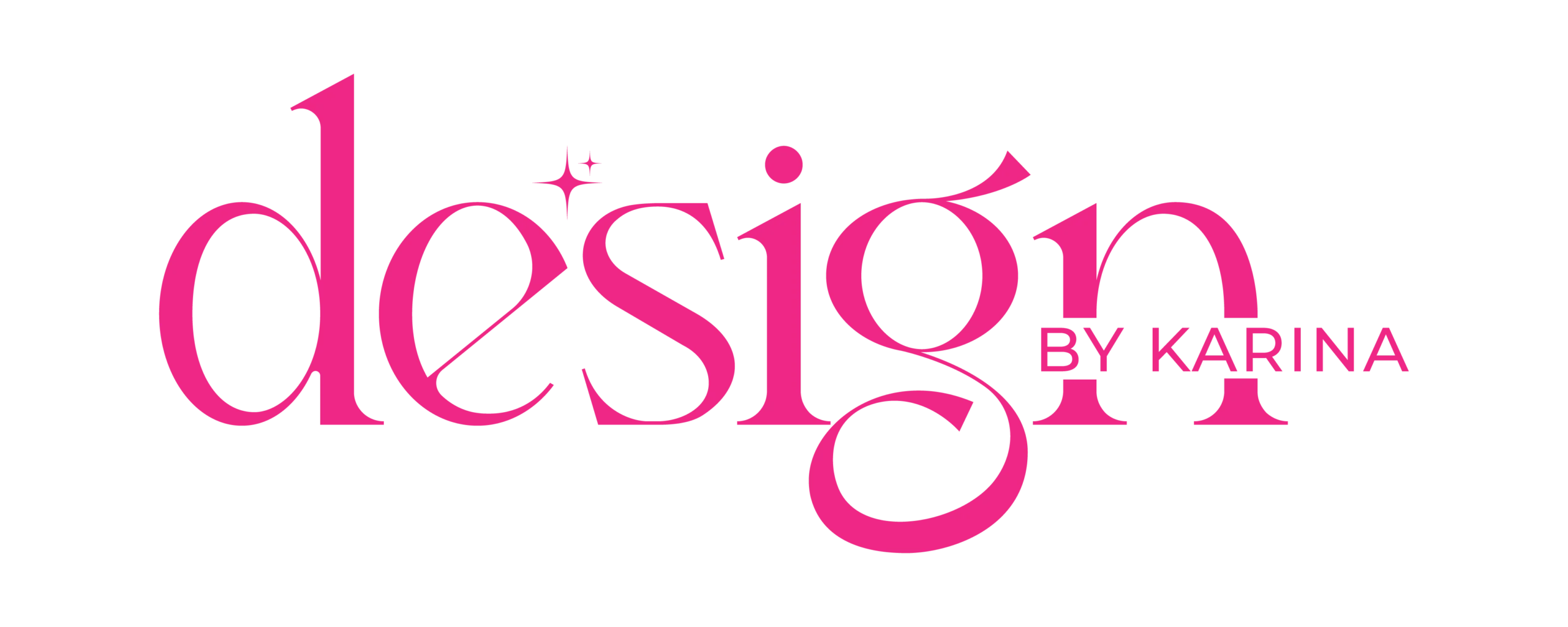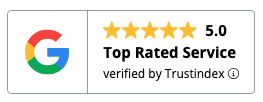
Table of Contents
- Introduction
- Why Quality Web Design Matters for Your Small Business
- Breaking Down the Costs: Key Factors
- Every Possible Website Cost: Beyond Design
- Understanding Pricing Models in Rotterdam
- Real-World Examples: Case Studies & Personal Anecdotes
- Additional Considerations: Hidden Costs and Extra Features
- Tips for Small Business Owners to Budget for Your Website
- How to Choose the Right Web Designer for Your Business
- Comprehensive Breakdown of Every Website-Related Cost
- Conclusion & Next Steps
- Let’s Work Together
Navigating the world of web design can be overwhelming—especially if you’re a small business owner looking for quality, affordable solutions. As an experienced web designer and former product designer at Uber, I’ve seen firsthand how a well-designed website can transform a business. In this article, I’ll break down everything you need to know about the costs associated with website design in Rotterdam, sharing practical examples, personal anecdotes, and actionable tips along the way.

Hi there! I’m Karina, a web designer based in Rotterdam, and I specialize in helping small businesses like yours create websites that work. Over the years, I’ve helped countless businesses build their online presence, and I can tell you, having a well-made WordPress & Shopify website can be a game-changer.rina, a Rotterdam-based web designer and founder of Design by Karina, where I create websites that make an impact.
Introduction
Creating a website isn’t just about putting your business online—it’s about establishing trust, showcasing your brand, and creating a seamless user experience that converts visitors into loyal customers. Whether you’re a local café in the heart of Rotterdam or a boutique service provider, understanding the cost factors involved can help you make informed decisions and avoid unexpected expenses.
In my years working with small businesses, I’ve witnessed how investing in a quality website can drive growth. I remember a local restaurant I worked with that saw a dramatic 40% increase in reservations simply by revamping their site to be more user-friendly and visually appealing. This article is designed to demystify the process and guide you step-by-step through what you can expect when planning your website design project.

Why Quality Web Design Matters for Your Small Business
Quality web design isn’t just about aesthetics—it’s a strategic tool that directly impacts your business’s credibility and success.
Building Trust & Credibility
A professionally designed website builds trust with potential customers. When visitors land on your site and see a clean, modern design, they’re more likely to view your business as reliable and professional. My experience at Uber taught me that trust is built through consistency and attention to detail—qualities that a quality website delivers every time.
Enhancing User Experience
A well-thought-out design ensures that users can easily navigate your site, find the information they need, and complete desired actions—whether that’s booking a service or making a purchase. Responsive design and fast load times are critical components that enhance user experience and encourage repeat visits.
SEO & Online Visibility
Search engine optimization (SEO) is closely tied to your website’s design. Clean code, mobile-friendly layouts, and fast load speeds are all factors that search engines consider when ranking your site. An effective web design strategy can significantly boost your online visibility, driving more organic traffic to your business.

Breaking Down the Costs: Key Factors
The cost of website design in Rotterdam can vary widely based on several factors. Here’s a closer look at the main components that influence pricing.
Design Complexity & Customization
- Custom vs. Template-Based Designs:
Custom designs are tailored to your brand and business needs, often resulting in a unique look and feel. However, they typically come at a higher cost compared to template-based solutions, which can be a budget-friendly option for many small businesses. - Visual Elements and Branding:
Custom illustrations, photography, and high-end animations can enhance your website’s appeal, but they also add to the overall cost. As someone who has worked on multiple high-profile projects, I can attest that investing in original design elements pays off in terms of brand recognition and customer engagement.
Functionality & Features
- Interactive Elements:
Features such as interactive forms, dynamic content, and user-friendly navigation menus require additional development time and expertise. - E-commerce Capabilities:
If you plan to sell products or services directly from your website, e-commerce functionality—complete with secure payment gateways, shopping carts, and inventory management—will increase the cost. - Content Management System (CMS):
Choosing a robust CMS like WordPress influences both the upfront design cost and the long-term maintenance expenses.
Content Creation & SEO Integration
- Professional Copywriting:
High-quality content that speaks to your audience and is optimized for SEO can make a significant difference in your website’s performance. Investing in skilled copywriters is crucial for making your site engaging and effective. - SEO Tools & Plugins:
Integrating SEO-friendly plugins, analytics, and monitoring tools may add to the initial cost but are essential for long-term success.
Technical Aspects: Hosting, Maintenance & Security
- https://designbykarina.com/services-pricing/Reliable Hosting:
Your choice of hosting can range from shared hosting, which might cost as little as €5-€10 per month, to VPS or dedicated hosting solutions that can run €100 or more per month. The type of hosting directly affects your website’s performance and uptime. - Ongoing Maintenance:
Regular updates, security checks, and performance optimizations are vital for keeping your website running smoothly. Expect to factor in a recurring cost for ongoing support. - Security Measures:
With cyber threats on the rise, investing in robust security features—like SSL certificates (which can be free with services such as Let’s Encrypt or cost up to €200 annually), regular backups, and malware scans—is essential to safeguard your business.

Every Possible Website Cost: Beyond Design
When budgeting for your website, it’s important to consider every potential cost involved—not just the design. Here’s an in-depth look at additional expenses you may encounter.
Domain Registration & Renewal
- Domain Name:
A domain name is your online address, and it typically costs between €10 to €20 per year. Premium domains or those in high demand can cost more. - Domain Privacy:
Protecting your personal information through domain privacy services can add an extra fee, usually around €5-€15 per year.
SSL Certificates & Security
- SSL Certificate:
Essential for encrypting data and securing your website, SSL certificates can be free or range up to €200 per year for more advanced certificates. - Additional Security Services:
Consider investing in regular security audits, malware scanning, and firewall services. These can add anywhere from €10 to €50 per month, depending on the level of protection you require.
Hosting Solutions
- Shared Hosting:
Ideal for small websites, shared hosting is cost-effective at around €5-€10 per month. - Virtual Private Server (VPS):
For better performance and more control, VPS hosting can range from €20-€80 per month. - Dedicated Hosting:
If your website demands high performance or has significant traffic, dedicated hosting can cost €100 or more per month. - Managed Hosting:
Many web design agencies offer managed hosting packages that include regular updates, backups, and security—costing from €30 to €150 per month.
Website Builders & E-commerce Platforms
- Shopify Plans:
For businesses that prefer an all-in-one solution, Shopify offers a range of plans:- Basic Shopify: Around €29 per month.
- Shopify Plan: Approximately €79 per month.
- Advanced Shopify: Roughly €299 per month. These plans include hosting, security, and an easy-to-use platform for e-commerce.
- Other Website Builders:
Platforms like Wix, Squarespace, and Weebly offer integrated solutions that bundle hosting, design templates, and support. Their costs typically range from €12 to €40 per month, depending on the features.
Payment Processing & E-commerce Fees
- Payment Gateways:
Integrating payment gateways such as PayPal, Stripe, or local European alternatives incurs transaction fees, usually between 2-3% per transaction. - Additional E-commerce Plugins:
For added functionalities—such as advanced inventory management, customer reviews, or marketing automation—extra plugins or apps may require monthly or one-time payments.
Marketing & Analytics Tools
- Email Marketing Services:
Services like Mailchimp or Constant Contact can cost anywhere from €10 to €50 per month, depending on the size of your mailing list. - Analytics Tools:
While Google Analytics is free, premium analytics tools or additional monitoring services may incur additional costs. - Social Media Integrations:
Integrating social media feeds and sharing tools can sometimes require subscription services or additional development work.
Content Updates & Maintenance
- Regular Updates:
Websites require periodic updates to keep content fresh and to implement the latest security patches. Many agencies offer maintenance plans that can range from €50 to €200 per month. - Bug Fixes & Technical Support:
Unforeseen technical issues may require ad-hoc support, which could be charged on an hourly basis, typically €50-€100 per hour.
Understanding Pricing Models in Rotterdam
Different web designers and agencies adopt various pricing models. Understanding these can help you choose the model that best fits your needs and budget.
Fixed Price Projects
Fixed price projects provide a clear cost upfront, making them ideal for small businesses with a defined scope. You know exactly what you’re paying for, with little room for unexpected expenses. However, this model works best when your requirements are well-defined from the start.
Hourly Rates
Some web designers charge by the hour, which can be more flexible if your project scope is unclear or likely to evolve over time. This model is great for iterative projects but can be less predictable in terms of total cost. It’s important to set clear expectations and track hours carefully to avoid budget overruns.
Retainers & Ongoing Maintenance
For businesses that want continuous support, maintenance, and updates, retainer models can be beneficial. This ensures your website stays current and secure without the need for separate, sporadic payments.

Real-World Examples: Case Studies & Personal Anecdotes
Sometimes the best way to understand the impact of web design is through real-world examples.
Case Study: A Local Café’s Website Transformation
I once worked with a charming local café in Rotterdam that had an outdated website. The owners were hesitant at first due to cost concerns, but after we redesigned the site with modern visuals, easy navigation, and integrated online ordering, their business saw a significant boost in customer engagement. The site not only attracted new patrons but also improved customer loyalty through an engaging user experience.
Lessons Learned from Uber
During my time at Uber, I learned that simplicity and user-centric design are key. One project involved streamlining the user interface for the driver app. Even minor improvements in layout and responsiveness led to a measurable increase in user satisfaction and efficiency. This experience reinforced my belief that every design element—no matter how small—can have a substantial impact on overall performance.
Additional Considerations: Hidden Costs and Extra Features
Beyond the obvious design and development fees, there are several additional elements that can affect your budget.
E-commerce and Booking Systems
For small businesses that rely on online sales or appointment bookings, integrating e-commerce or booking systems can be a game-changer. However, these features require extra investment in secure payment solutions, inventory management, and user interface design.
Third-Party Integrations
Modern websites often need to connect with third-party tools such as CRMs, email marketing platforms, or social media channels. Each integration may involve additional setup fees and ongoing costs to ensure seamless performance.
Custom Design Elements and Branding
Investing in unique design elements—like custom icons, animations, or interactive infographics—adds personality to your website and reinforces your brand identity. While these elements can elevate your site, they also come with additional costs.
Tips for Small Business Owners to Budget for Your Website
Budgeting for a website doesn’t have to be daunting. Here are some practical tips to help you allocate your resources effectively.
Prioritize Your Business Needs
Identify the core functionalities your website must have to support your business goals. Prioritize features that directly impact your customer experience and conversion rates. For example, if you run a restaurant, an intuitive online reservation system might be more critical than elaborate animations.
Ask the Right Questions
When discussing your project with web designers, ask detailed questions about what’s included in the cost. Inquire about:
- The number of design revisions
- Whether SEO and content creation are part of the package
- Post-launch support and maintenance fees
This clarity will help you avoid unexpected expenses and ensure that the project stays within budget.
Plan for Future Growth
Your website should be designed with scalability in mind. As your business grows, you might need to add new features or upgrade your hosting plan. Allocate a portion of your budget for future enhancements, ensuring that your website evolves along with your business.
How to Choose the Right Web Designer for Your Business
Choosing a web designer who understands your vision and business needs is critical to the success of your project.
Evaluate Portfolios and Reviews
Before hiring a web designer, review their portfolio to see examples of past work. Look for projects similar to yours in scope and style. Positive reviews and testimonials from small business owners can also provide reassurance of their expertise.
Communication & Understanding of Your Vision
A great web designer will listen to your ideas and offer suggestions based on industry best practices. During initial consultations, gauge how well they understand your brand and whether they can translate your vision into a functional, attractive website. Communication is key—ensure you’re comfortable with their process and responsiveness.
Aligning on Goals and Budget
Be upfront about your budget and expectations. A good designer will help you prioritize features and propose a solution that fits both your needs and your financial plan. This transparency helps build a strong working relationship from the outset.
Comprehensive Breakdown of Every Website-Related Cost
For small business owners, understanding every cost component associated with running a website is crucial. Here’s a comprehensive list of potential expenses:
Domain & Registration
- Domain Registration: €10–€20 per year.
- Domain Privacy Protection: €5–€15 per year.
Hosting Solutions
- Shared Hosting: €5–€10 per month.
- Virtual Private Server (VPS): €20–€80 per month.
- Dedicated Hosting: €100+ per month.
- Managed Hosting: €30–€150 per month.
Security & Maintenance
- SSL Certificates: Free (Let’s Encrypt) to €200 per year.
- Security Services: €10–€50 per month.
- Regular Maintenance & Updates: €50–€200 per month.
- Backup Services: Often bundled with hosting or an additional €5–€20 per month.
E-commerce & Website Builders
- Shopify Plans:
- Basic: €29 per month
- Standard: €79 per month
- Advanced: €299 per month
- Other Website Builders (Wix, Squarespace, Weebly): €12–€40 per month.
- Payment Processing Fees: Typically 2–3% per transaction.
- E-commerce Plugins: Varying one-time or subscription fees.
Marketing & Add-On Tools
- Email Marketing: €10–€50 per month.
- Analytics & Advanced Monitoring Tools: Free to premium plans.
- Social Media Integrations: Sometimes free or may incur development costs.
Design & Development Extras
- Custom Illustrations & Animations: Costs vary based on complexity.
- Content Creation (Copywriting, Photography): Can range significantly; budget €200+ depending on needs.
- Third-Party Integrations (CRM, Booking Systems, etc.): Setup fees plus recurring costs.

Conclusion & Next Steps
A well-designed website is a powerful asset for any small business. By understanding the myriad factors that influence cost—from design complexity and functionality to every additional expense like hosting, SSL certificates, and Shopify plans—you can make informed decisions that align with your business goals. Whether you opt for a fixed-price project, hourly rates, or a retainer model, the key is to invest in quality design that builds trust, enhances user experience, and boosts your online visibility.
Recap and Final Thoughts
- Invest in Quality: A professionally designed website is a long-term asset that drives growth and customer engagement.
- Understand Every Cost: Familiarize yourself with all the elements—from design and development to hosting, e-commerce platforms, and ongoing maintenance—to avoid surprises.
- Plan for the Future: Ensure your website is scalable and flexible to adapt to your evolving business needs.
- Choose the Right Partner: Work with a web designer who understands your vision, communicates effectively, and aligns with your budget.
Call to Action: Request a Free Consultation
If you’re ready to take your small business to the next level with a professional website design that considers every detail—from initial design to ongoing maintenance and extra integrations—don’t hesitate to reach out. I’d be happy to discuss your project and offer insights tailored to your specific needs. Contact us today for a free consultation and let’s build a website that truly reflects your brand’s potential.
[Insert a high-quality call-to-action image, such as a friendly team photo or an inviting “Contact Us” button graphic]
GET IN TOUCH

